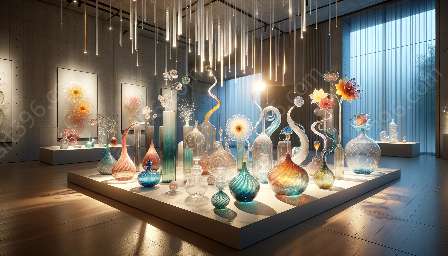Glass art has a long history of captivating viewers with its shimmering beauty and intricate designs. However, artists are now finding new ways to enhance their creations by incorporating storytelling and narrative into their glass art pieces. This fusion adds depth and emotional resonance, creating a more immersive experience for the audience.
The Power of Storytelling in Visual Arts
Storytelling has been a fundamental part of human communication since ancient times. It has the power to evoke strong emotions and connect people to shared experiences. When applied to visual arts, storytelling offers a unique opportunity to engage viewers on a deeper level, inviting them to interpret and connect with the artwork in a more personal way. Glass art, with its translucent and reflective properties, provides an ideal canvas for the integration of narrative elements.
Enhancing Glass Art Exhibitions
When incorporated into glass art exhibitions, storytelling and narrative can transform the viewing experience. Instead of merely admiring the physical attributes of the glass, visitors are drawn into the story behind each piece. This engagement creates a sense of connection and empathy, allowing viewers to appreciate the art in a more profound and meaningful way.
Creating a Narrative Journey
Artists often use techniques such as symbolism, color, and form to convey their narratives. Each element in a glass art piece can be imbued with meaning, weaving a tapestry of stories that unfold as viewers explore the exhibition. Visitors are encouraged to interpret and uncover the layers of storytelling embedded in the art, making each viewing a unique and personal journey.
Engaging the Senses
Storytelling in glass art goes beyond the visual aspect. The tactile nature of glass allows for the incorporation of texture and shape, adding a multi-sensory dimension to the narrative. Viewers can physically connect with the art, further immersing themselves in the stories woven into each piece.
A New Perspective on Glass Art
By embracing storytelling and narrative, glass artists are pushing the boundaries of traditional glass art, infusing it with emotional depth and intellectual intrigue. This approach invites a reimagining of what glass art can convey and how it can resonate with audiences. As a result, glass art exhibitions become not only displays of skill and craftsmanship but also compelling narratives that invite contemplation and dialogue.

